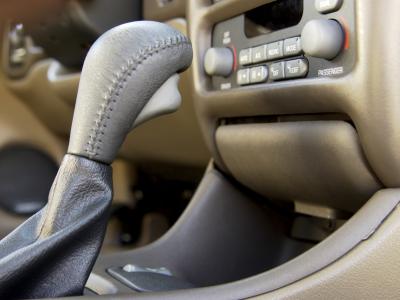
The Chevrolet crankshaft sensor is an electro-magnetic, hall effect sensor. A hall effect sensor consists of a stationary electro-magnet and a reluctor, which is a 2-inch high metal dish. The sides of this dish are cut into segments with deliberate spacing. The dish, or reluctor, is mounted to the crankshaft and rotates to position the segments of the reluctor in front of the sensor. As a reluctor piece, which is also called a pole piece, passes in front of and in close proximity to the sensor, a closed circuit is produced. As the pole piece moves away from the sensor, leaving an open space between the next pole piece, an open circuit occurs. Its sole function is to create 24X square signal waves, or pulses per revolution. This signal wave is sent to the engine management computer which, in turn, uses this signal to time the fuel injection for misfire detection and for the operation of the ICM (ignition control module) for ignition purposes. The crankshaft sensor is located either behind the crankshaft pulley or on the side of the block, depending on the year and model Chevrolet.
Connect the scanner's red lead to the 24X signal wire at the electrical connector on the crankshaft sensor to check for the proper signal while cranking the engine. The connector has three wires. The wire to the right on the connector is the 24X-signal wire, the center wire is the ground and the wire to the far left is the 12-volt supply wire. Connect the black lead to a good ground.
Turn the scanner to waveform viewing and crank the engine. A tall rectangular wave should be displayed in series with even spacing as the engine turns. If no signal is generated, proceed to the next step.
Connect the red lead to the 12-volt supply wire, leaving the ground lead connected. Turn the key and check for 12 volts at this wire. If there is no power, check the fuses and wiring. If there are 12 volts, replace the sensor.
Disconnect the electrical connector at the sensor. Connect the red wire to the center terminal in the sensor and leave the black lead on a good ground. Place the scanner on the ohm scale. The scanner should display less than 100Mv if the sensor is good. Plug the connector into the sensor.
Place the red lead on the 24X wire. Turn the scanner to Hertz. Start the engine and watch the frequency. The scanner should display a frequency of 200-250 Hz. The frequency should rise smoothly as the engine accelerates.